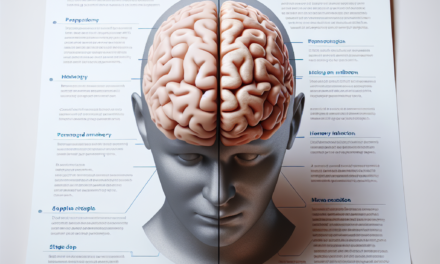Unveiling SYNAPSING: A New Era Begins
The digital landscape is evolving at an unprecedented pace, and with it comes the emergence of innovative technologies that promise to reshape our interactions, workflows, and even our understanding of intelligence itself. One such groundbreaking development is SYNAPSING, a concept that integrates advanced neural networks, machine learning, and cognitive computing to create a more interconnected and intelligent digital ecosystem. This article delves into the multifaceted dimensions of SYNAPSING, exploring its implications, applications, and the transformative potential it holds for various sectors.
Understanding SYNAPSING: The Concept and Its Origins
SYNAPSING is a term that encapsulates the convergence of various technologies aimed at enhancing cognitive functions through digital means. The term draws inspiration from the biological synapse, the junction between neurons that facilitates communication in the brain. In the digital realm, SYNAPSING refers to the integration of artificial intelligence (AI), machine learning (ML), and data analytics to create systems that can learn, adapt, and make decisions in real-time.
The origins of SYNAPSING can be traced back to the early developments in neural networks during the 1980s, which laid the groundwork for modern AI. However, it wasn’t until the advent of big data and cloud computing in the 2000s that the true potential of SYNAPSING began to emerge. With vast amounts of data available for analysis, researchers and developers started to create algorithms that could mimic human cognitive processes, leading to the birth of more sophisticated AI systems.
Key components of SYNAPSING include:
- Neural Networks: These are computational models inspired by the human brain, designed to recognize patterns and make predictions based on input data.
- Machine Learning: A subset of AI that enables systems to learn from data and improve their performance over time without being explicitly programmed.
- Cognitive Computing: This involves simulating human thought processes in a computerized model, allowing machines to understand, reason, and learn from their experiences.
As SYNAPSING continues to evolve, it is becoming increasingly clear that its applications are vast and varied, impacting numerous industries and changing the way we interact with technology.
The Role of SYNAPSING in Business Transformation
In the business world, SYNAPSING is revolutionizing operations, enhancing decision-making processes, and driving innovation. Companies are leveraging SYNAPSING technologies to gain insights from data, automate routine tasks, and improve customer experiences. The following are key areas where SYNAPSING is making a significant impact:
1. Data-Driven Decision Making
One of the most significant advantages of SYNAPSING is its ability to process and analyze large volumes of data quickly and accurately. Businesses can harness this capability to make informed decisions based on real-time insights. For instance, companies like Amazon and Netflix utilize SYNAPSING algorithms to analyze customer behavior and preferences, allowing them to tailor their offerings and marketing strategies effectively.
2. Automation of Routine Tasks
SYNAPSING technologies enable businesses to automate repetitive tasks, freeing up employees to focus on more strategic initiatives. For example, chatbots powered by AI can handle customer inquiries, while machine learning algorithms can streamline supply chain management by predicting demand and optimizing inventory levels.
3. Enhanced Customer Experience
By leveraging SYNAPSING, businesses can create personalized experiences for their customers. For instance, retail companies can use predictive analytics to recommend products based on past purchases, while financial institutions can offer tailored investment advice based on individual risk profiles.
4. Innovation and Product Development
SYNAPSING fosters innovation by enabling rapid prototyping and testing of new ideas. Companies can use AI-driven simulations to assess the viability of new products before launching them in the market. This approach not only reduces costs but also accelerates the time-to-market for new offerings.
5. Competitive Advantage
Organizations that adopt SYNAPSING technologies can gain a competitive edge by staying ahead of market trends and responding quickly to changes in consumer behavior. For example, companies that utilize AI for market analysis can identify emerging trends and adjust their strategies accordingly, ensuring they remain relevant in a fast-paced environment.
SYNAPSING in Healthcare: A Paradigm Shift
The healthcare industry is undergoing a significant transformation due to the integration of SYNAPSING technologies. From diagnostics to treatment plans, SYNAPSING is enhancing patient care and improving outcomes. Here are some key areas where SYNAPSING is making a difference:
1. Predictive Analytics for Patient Care
SYNAPSING enables healthcare providers to analyze patient data and predict potential health issues before they arise. For instance, machine learning algorithms can identify patterns in patient records that indicate a higher risk of conditions such as diabetes or heart disease. This proactive approach allows for early intervention and better management of chronic diseases.
2. Personalized Medicine
With SYNAPSING, healthcare professionals can develop personalized treatment plans based on an individual’s genetic makeup, lifestyle, and medical history. This tailored approach not only improves treatment efficacy but also minimizes adverse effects. For example, cancer treatments can be customized based on the specific genetic mutations present in a patient’s tumor.
3. Enhanced Imaging and Diagnostics
AI-powered imaging technologies are revolutionizing diagnostics by improving the accuracy and speed of image analysis. Radiologists can leverage SYNAPSING algorithms to detect anomalies in X-rays, MRIs, and CT scans with greater precision. This advancement not only enhances diagnostic accuracy but also reduces the time required for interpretation.
4. Streamlined Administrative Processes
SYNAPSING can also optimize administrative tasks within healthcare organizations. For example, AI-driven systems can automate appointment scheduling, billing, and claims processing, reducing administrative burdens and allowing healthcare providers to focus more on patient care.
5. Remote Monitoring and Telehealth
The rise of telehealth services has been accelerated by SYNAPSING technologies, enabling healthcare providers to monitor patients remotely. Wearable devices equipped with AI can track vital signs and alert healthcare professionals to any concerning changes, facilitating timely interventions and reducing hospital readmissions.
SYNAPSING in Education: Transforming Learning Experiences
The education sector is also experiencing a transformation due to SYNAPSING technologies. By integrating AI and machine learning into educational practices, institutions can enhance learning experiences and improve student outcomes. Here are some key areas where SYNAPSING is making an impact:
1. Personalized Learning Paths
SYNAPSING allows educators to create personalized learning experiences tailored to individual student needs. AI-driven platforms can assess a student’s strengths and weaknesses, providing customized resources and recommendations to help them succeed. For example, platforms like Khan Academy utilize adaptive learning technologies to adjust content based on student performance.
2. Intelligent Tutoring Systems
Intelligent tutoring systems powered by SYNAPSING can provide students with real-time feedback and support. These systems can analyze student interactions and offer targeted assistance, helping learners grasp complex concepts more effectively. Research has shown that students using intelligent tutoring systems often outperform their peers in traditional classroom settings.
3. Enhanced Administrative Efficiency
Educational institutions can leverage SYNAPSING to streamline administrative processes, such as enrollment, grading, and resource allocation. AI-driven analytics can help administrators make data-informed decisions, optimizing resource utilization and improving overall institutional performance.
4. Data-Driven Insights for Educators
SYNAPSING technologies enable educators to gain valuable insights into student performance and engagement. By analyzing data from assessments and classroom interactions, teachers can identify trends and adjust their teaching strategies accordingly. This data-driven approach fosters continuous improvement in educational practices.
5. Bridging the Skills Gap
As the job market evolves, SYNAPSING can help bridge the skills gap by providing learners with access to relevant training and resources. Online platforms powered by AI can offer personalized career guidance and skill development opportunities, ensuring that students are equipped with the skills needed for future employment.
The Ethical Considerations of SYNAPSING
As with any transformative technology, the rise of SYNAPSING raises important ethical considerations that must be addressed. The following are key ethical concerns associated with the implementation of SYNAPSING technologies:
1. Data Privacy and Security
The collection and analysis of vast amounts of data raise significant privacy concerns. Organizations must ensure that they are handling personal data responsibly and in compliance with regulations such as the General Data Protection Regulation (GDPR). Failure to do so can result in severe consequences, including legal penalties and damage to reputation.
2. Bias in Algorithms
AI algorithms are only as good as the data they are trained on. If the training data is biased, the resulting algorithms may perpetuate existing inequalities. It is crucial for organizations to actively work towards eliminating bias in their algorithms to ensure fair and equitable outcomes for all users.
3. Job Displacement
The automation of tasks through SYNAPSING technologies raises concerns about job displacement. While these technologies can enhance efficiency, they may also lead to the elimination of certain job roles. It is essential for organizations to consider the social implications of automation and invest in reskilling and upskilling initiatives for affected employees.
4. Accountability and Transparency
As SYNAPSING technologies become more autonomous, questions of accountability and transparency arise. Organizations must establish clear guidelines for the use of AI and ensure that decision-making processes are transparent to build trust with users and stakeholders.
5. The Future of Human-Machine Collaboration
As SYNAPSING technologies continue to evolve, the relationship between humans and machines will also change. It is essential to foster a collaborative environment where humans and machines work together to achieve common goals. This requires a shift in mindset and a focus on enhancing human capabilities rather than replacing them.
Conclusion: Embracing the Future with SYNAPSING
The unveiling of SYNAPSING marks the beginning of a new era characterized by enhanced intelligence, connectivity, and innovation. As organizations across various sectors embrace SYNAPSING technologies, they stand to benefit from improved decision-making, increased efficiency, and enhanced customer experiences. However, it is crucial to navigate the ethical considerations associated with these technologies to ensure that their implementation is responsible and equitable.
As we move forward into this new era, it is essential for businesses, healthcare providers, educators, and policymakers to collaborate and harness the potential of SYNAPSING for the greater good. By doing so, we can create a future where technology enhances human capabilities, drives innovation, and ultimately leads to a more connected and intelligent world.




